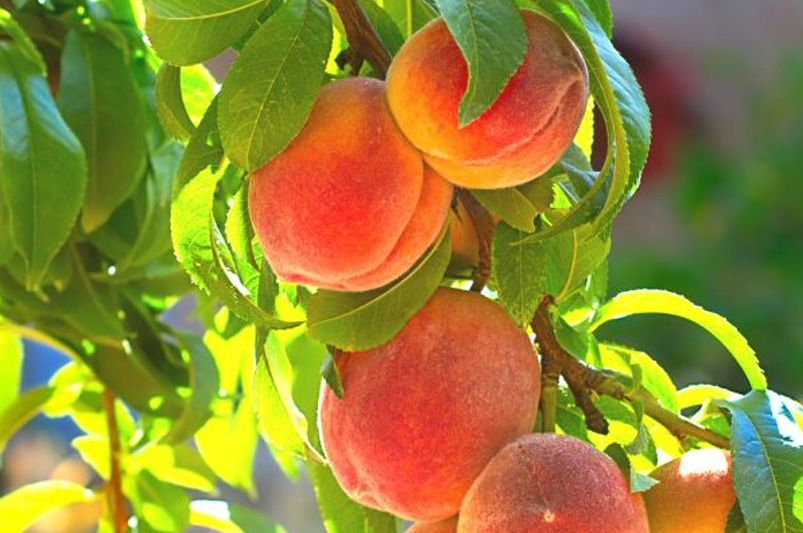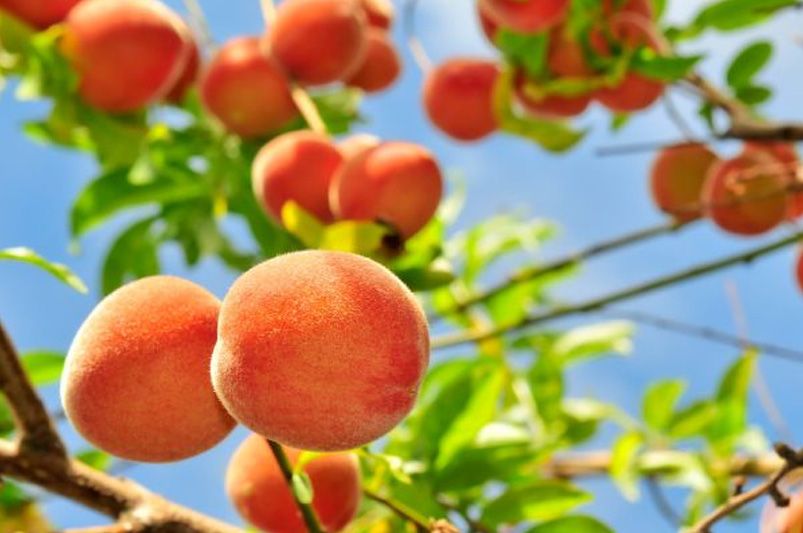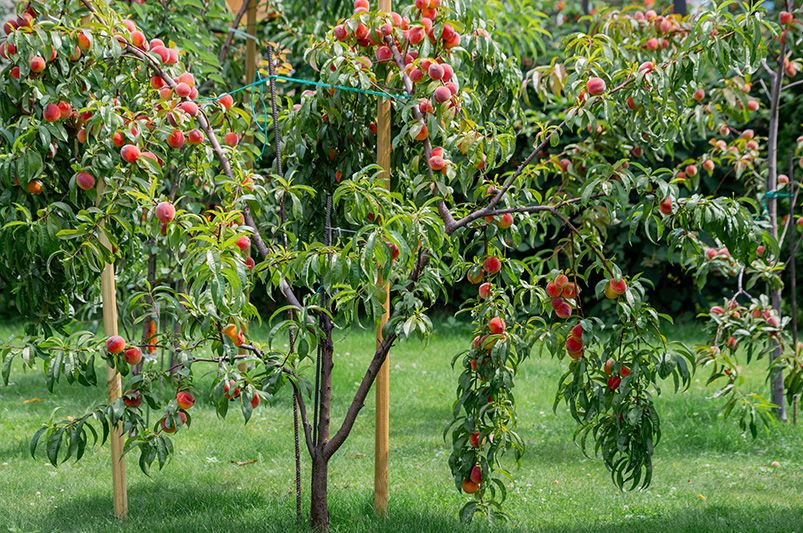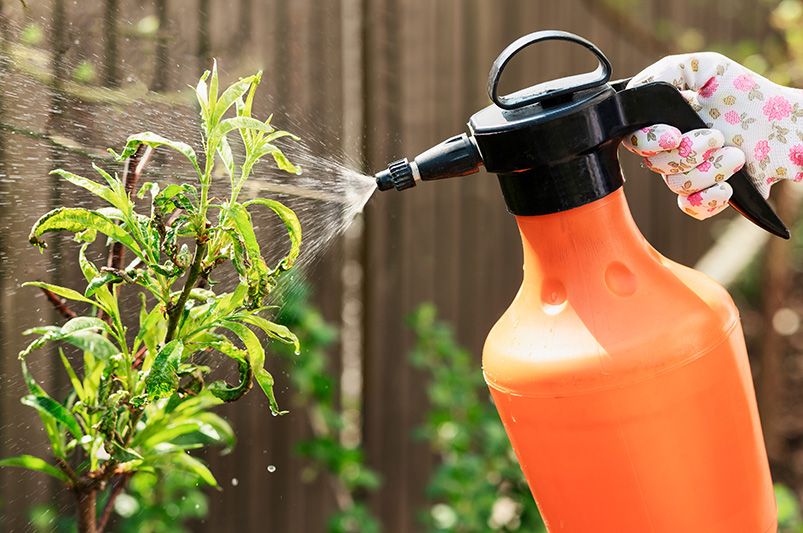
Grow Delicious Peaches: Complete Guide to Peach Trees
Published: 20/08/2024 | Updated: 27/08/2024
Grow Delicious Peaches: Complete Guide to Peach Trees
Peach trees are a delightful addition to any garden, offering not only beautiful foliage and blossoms but also delicious, juicy fruit. Whether you're an experienced gardener or just starting, peach trees can provide a rewarding experience with their sweet, succulent produce. In this article, we'll explore various peach tree varieties, their unique characteristics, and the best practices for planting, caring for, and maintaining them. Growing your own peaches ensures fresh, organic fruit right at your fingertips, and with ShrubHub's extensive selection of peach trees, you can find the perfect variety to suit your garden. For more gardening tips and inspiration, be sure to check out ShrubHub’s blog, where we share weekly insights to help you cultivate the garden of your dreams.


ShrubHub's Peach Tree Varieties
Choosing the right peach tree variety is crucial for a successful and fruitful harvest. Each variety has its own unique characteristics, flavors, and growth requirements. Here are some of the popular peach tree varieties that you can find at ShrubHub:
Babcock Peach Tree: The Babcock Peach Tree is known for its white-fleshed, juicy peaches that have a sweet and tangy flavor. This variety is semi-freestone, making it easy to enjoy fresh or use in recipes. Babcock peaches ripen early in the season, offering a refreshing taste of summer.

Belle of Georgia Peach Tree: The Belle of Georgia Peach Tree produces large, firm, and aromatic peaches with a creamy white flesh. This variety is perfect for fresh eating, canning, and baking. It is known for its high yields and disease resistance, making it a popular choice among gardeners.
Elberta Peach Tree: The Elberta Peach Tree is a classic variety that produces large, golden-yellow peaches with a red blush. Known for its excellent flavor and versatility, Elberta peaches are great for eating fresh, freezing, and canning. This hardy tree is also known for its resistance to pests and diseases.
July Snow Peach: The July Snow Peach is a unique variety that stands out with its large, snow-white flesh and a hint of red on the skin. This peach is exceptionally juicy and sweet, making it a favorite for fresh consumption and desserts. It ripens mid-season and offers a delightful, refreshing taste.
Redhaven Peach Tree: The Redhaven Peach Tree is prized for its medium to large freestone peaches with a beautiful red blush over a golden-yellow background. This variety is known for its consistent, high-quality fruit, making it ideal for fresh eating, canning, and freezing. Redhaven peaches are also one of the earliest ripening varieties, ensuring an early start to the peach season.
Redskin Peach Tree: The Redskin Peach Tree produces large, vibrant red peaches with yellow flesh that is firm, juicy, and flavorful. This variety is excellent for fresh eating, canning, and freezing. It is known for its high yields and reliable performance, making it a dependable choice for home orchards.
Plantation & Growth
Successfully planting and nurturing peach trees in your backyard or orchard requires attention to detail and an understanding of their specific needs. Here’s a comprehensive guide to help you ensure your peach trees grow healthy and strong:
Choosing the Right Location
Peach trees thrive in full sunlight, so it’s essential to select a location that receives at least 6-8 hours of direct sunlight daily. The site should have well-draining soil to prevent root rot and other issues. Avoid planting in low-lying areas where water can accumulate.
Soil Preparation
Peach trees prefer slightly acidic to neutral soil (pH 6.0-7.0). Before planting, test your soil and amend it if necessary. Incorporate organic matter like compost or well-rotted manure to enhance soil fertility and structure. This will promote healthy root growth and overall tree vigor.
Planting Your Peach Tree
- Digging the Hole: Dig a hole that is twice as wide and just as deep as the root ball of the tree. This allows the roots to spread out comfortably.
- Positioning the Tree: Place the tree in the hole, ensuring that the graft union (the bulge above the rootstock) is 2-3 inches above the soil level. This prevents the scion from developing roots and maintains the integrity of the graft.
- Backfilling: Fill the hole with the excavated soil, gently tamping it down to eliminate air pockets. Water the tree thoroughly to settle the soil around the roots.
Watering
Consistent moisture is vital, especially during the first few years of growth. Water your peach tree deeply once a week, ensuring the soil is moist but not waterlogged. Mulching around the base of the tree helps retain moisture and regulate soil temperature.
Fertilization
Apply a balanced fertilizer in early spring before new growth begins. Follow the manufacturer’s recommendations for application rates. Avoid over-fertilizing, as excessive nitrogen can lead to vigorous foliage growth at the expense of fruit production.
Support and Protection
Young peach trees may need staking to support them against strong winds. Additionally, protect your tree from pests and diseases by regularly inspecting the foliage and trunk. Use protective wraps or guards if necessary.
By following these plantation and growth guidelines, you can create an optimal environment for your peach trees, ensuring they establish well and thrive for years to come.

Plant Care
Proper care is crucial for maintaining the health and productivity of your peach trees. This section will cover essential practices to ensure your trees thrive and yield abundant, high-quality fruit.
Watering
Consistent and adequate watering is vital for the growth and fruit production of peach trees. During the growing season, water deeply once a week, ensuring the soil is moist but not waterlogged. Reduce watering frequency as the tree becomes established, but increase it during dry spells or drought conditions. Mulching around the base of the tree helps retain soil moisture and suppresses weeds.
Fertilization
Peach trees benefit from regular feeding to promote healthy growth and fruiting. Apply a balanced fertilizer in early spring before new growth begins. A 10-10-10 fertilizer is generally suitable, but soil testing can provide specific nutrient needs. Follow the manufacturer’s recommendations for application rates. Avoid excessive nitrogen, as it can lead to vigorous foliage growth with fewer fruits.
Mulching
Mulching is an effective practice to conserve soil moisture, regulate temperature, and reduce weed competition. Apply a 2-3 inch layer of organic mulch, such as wood chips or straw, around the base of the tree, keeping it a few inches away from the trunk to prevent rot.
Weed Control
Weeds compete with peach trees for nutrients and water. Regularly inspect the area around your tree and remove any weeds by hand or use mulch to suppress their growth. Avoid using herbicides near the tree's root zone to prevent damage.

Pest and Disease Management
Peach trees are susceptible to various pests and diseases. Regularly inspect your trees for signs of infestations or infections. Common pests include aphids, peach tree borers, and mites, while diseases like peach leaf curl, brown rot, and powdery mildew can affect your tree’s health.
- Preventive Measures: Keep the area around the tree clean and free of fallen leaves and fruit. Prune to maintain good air circulation, which reduces the risk of fungal infections.
- Organic Solutions: Use insecticidal soaps, horticultural oils, and neem oil to control pests. Organic fungicides can help manage diseases. Encourage beneficial insects, such as ladybugs and lacewings, to control pest populations.
- Chemical Treatments: If necessary, apply appropriate pesticides and fungicides as per the guidelines. Always follow the label instructions to ensure safe and effective use.
Winter Care
Protect your peach tree during the winter months, especially in colder climates. Apply a layer of mulch around the base to insulate the roots. In regions with harsh winters, consider wrapping the trunk with burlap or using tree guards to prevent frost damage and sunscald.
Monitoring and Maintenance
Regularly monitor your peach tree for any signs of stress, nutrient deficiencies, or damage. Address issues promptly to prevent them from affecting the overall health and productivity of the tree.
By following these plant care practices, you can ensure that your peach trees remain healthy, productive, and beautiful.
Conclusion
Peach trees are a delightful addition to any garden, providing not only delicious fruit but also beautiful blooms and vibrant foliage. Whether you choose the reliable Babcock Peach Tree, the sweet Belle of Georgia Peach Tree, the classic Elberta Peach Tree, the unique July Snow Peach, the early-producing Redhaven Peach Tree, or the hardy Redskin Peach Tree, you’re sure to enjoy the rewards of your effort and care.
By selecting the right variety, understanding the specifics of planting and growth, implementing proper plant care, and mastering pruning and propagation techniques, you can cultivate a thriving peach orchard. Remember to stay vigilant against common pests and diseases and employ sustainable gardening practices to keep your trees healthy and productive.
Don’t wait to transform your garden into a fruitful paradise. Explore the variety of peach trees available at ShrubHub and choose the perfect one for your needs. Get yours today and take advantage of our special offers, such as 12% off your order with code BMGM12.
Visit ShrubHub’s Peach Trees Collection to order your favorite peach tree and embark on a journey to growing your own delicious fruit. For more gardening tips and inspiration, be sure to check out our weekly blog articles on Shrubhub Blog. Sign up for our email newsletter to get access to exclusive offers, professional product discounts, and expert gardening advice.


